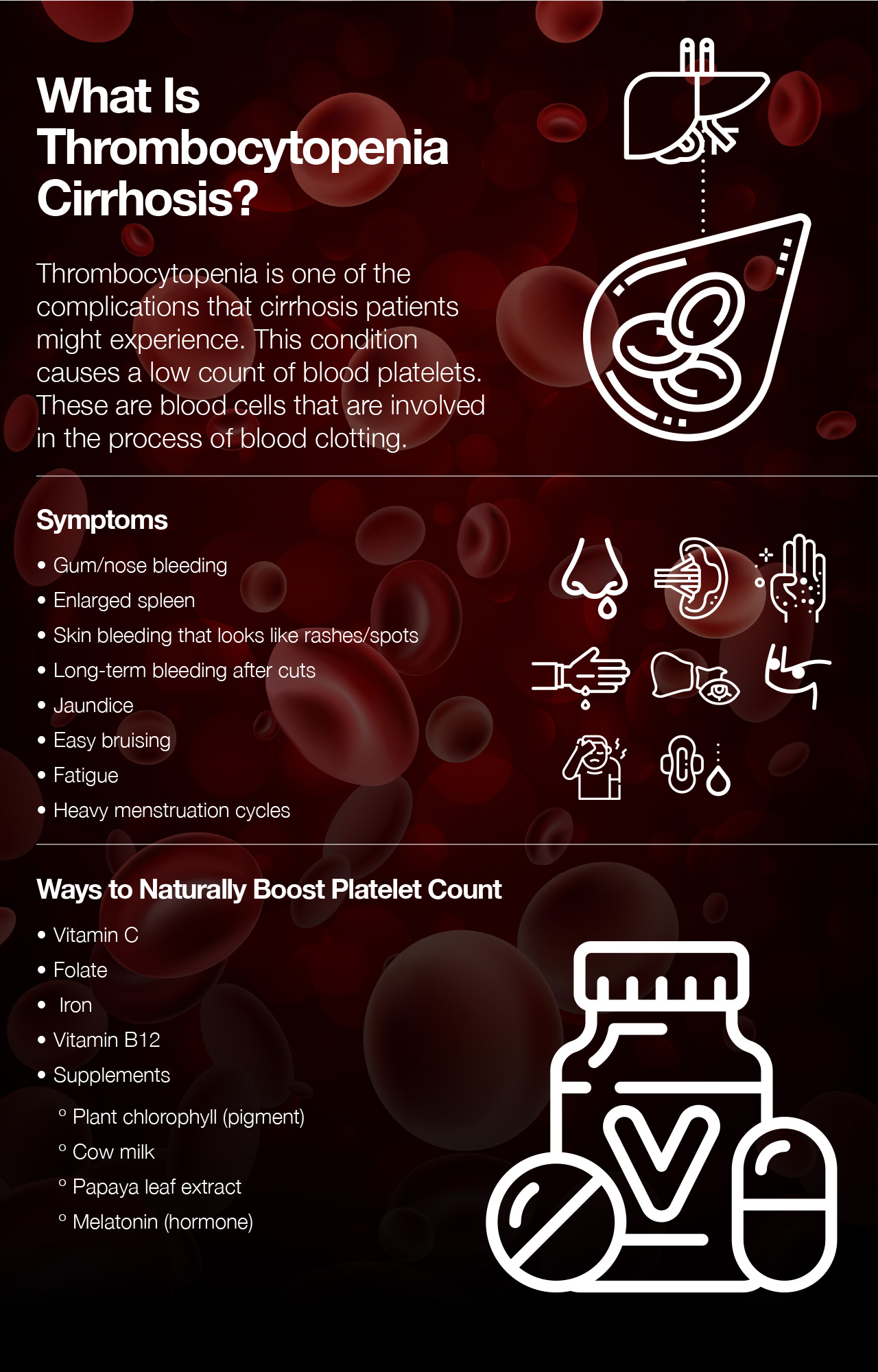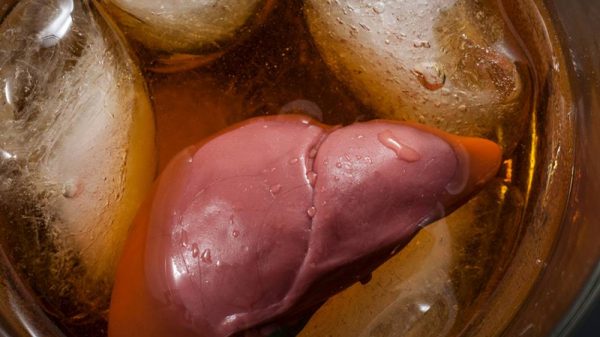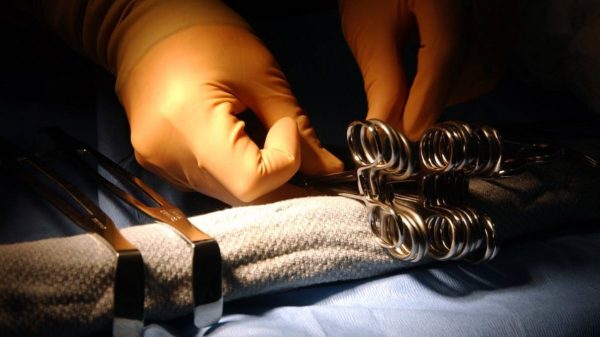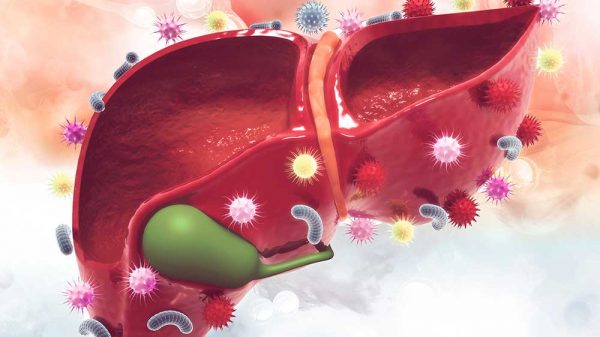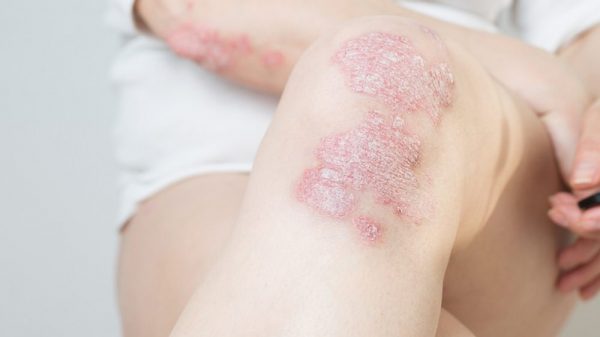Are you a cirrhosis patient with fatigue, red skin spots, or easy bruising? If so, then you might have thrombocytopenia cirrhosis. Each microliter of blood has up to 450,000 platelets. However, one of the complications that cirrhosis patients might experience is a low platelet count. The liver has several functions that can be affected when tissue scarring affects it. When it’s unable to get rid of blood toxins effectively, this can cause various symptoms that affect the blood, including lower platelet count.
While early-stage cirrhosis doesn’t include complications, it changes during the later stages. Thrombocytopenia is one of the various ones you might experience. Low levels of blood plates can cause various symptoms, including fatigue, red skin spots, and easy bruising. If you experience such side-effects, it’s important to get it checked out. Your doctor can help to determine whether or not it’s a sign of thrombocytopenia. There’s a chance it might be or a sign of other health conditions. If you have a serious health condition like cirrhosis, it’s important to get your blood checked from time to time for levels of red blood cells, white blood cells, and blood platelets.
What Is the Condition Cirrhosis All About?
Cirrhosis is a late-stage liver disease that’s caused by major scarring of liver tissue. It’s Stage 3 of liver disease, which starts with Inflammation and then Fibrosis (tissue scarring). If cirrhosis progresses to end-stage liver disease it can result in liver failure.
There are several treatments for cirrhosis, but the only “cure” is a liver transplant. That is an expensive procedure that can cost over $500,000. Even if you qualify for an organ transplant, there are factors you need to consider, like funds for the surgery, and finding the donated organ.
The early stages of liver disease often have no symptoms. Early-stage liver cirrhosis also includes minor liver scarring. However, this can become worse and start affecting the vital organ’s basic functions. The situation can get worse when various complications start to develop.
Some of the possible complications include:
- Yellowish skin/eyeballs (jaundice)
- Spiderweb-like blood vessels
- Fluid buildup in the abdomen (ascites)
- Infections (Hepatitis B/C)
- High blood pressure (liver vein)
- Enlarged spleen
- Liver cancer
- Brain disorders (hepatic encephalopathy)
These conditions can make it tougher to deal with cirrhosis. That’s because you’ll not only have to treat the main conditions of cirrhosis itself but also the complication’s symptoms.
One of the main goals of cirrhosis treatment is to slow down liver scarring. If you have alcohol-related cirrhosis, it’s important to stop drinking immediately. Meanwhile, if you have an infection, you can treat it effectively with medications. If you have issues related to blood platelets, you can also take steps to boost your body’s levels.
If you think you might have cirrhosis, it’s also important to get an early diagnosis. That can help to make sure you get the treatments needed. On the other hand, without such treatments, there’s a greater chance the cirrhosis will progress to later stages.
What Is Thrombocytopenia Cirrhosis?
Thrombocytopenia is one of the complications that cirrhosis patients might experience. This condition causes a low count of blood platelets. These are blood cells that are involved in the process of blood clotting.
Platelets can stop bleeding through clumping and making plugs in damaged blood vessels
This condition often happens due to another disorder/disease like cirrhosis. It can also be linked to other conditions, like immune system problems or leukemia (blood cancer).
Low blood platelets are also be triggered by taking particular prescription medicines. Both adults and children can experience this condition.
When a person experiences thrombocytopenia symptoms, this can trigger a few symptoms, or be mild. However, there are times when rock-bottom platelet levels that cause internal bleeding. In this situation, various treatments are available.
This condition can cause various signs/symptoms including:
- Gum/nose bleeding
- Enlarged spleen
- Skin bleeding that looks like rashes/spots
- Long-term bleeding after cuts
- Jaundice
- Easy bruising
- Fatigue
- Heavy menstruation cycles
There are various causes of blood platelet counts dropping under normal levels. Each microliter of blood usually has a range of 150,000 to 450,000 platelets. The body constantly renews platelet supply by making brand new platelets within the bone marrow.
There are different ways that people can get thrombocytopenia, including various medicines or conditions like cirrhosis. Various body functions affect a lower platelet count, which you should be aware of. Some of the main causes of lower platelet production, trapped platelets, more platelet breakdown, etc.
Sometimes thrombocytopenia treatments aren’t required. In some situations, the symptoms clear up and don’t require treatment. However, when people develop long-term/severe low platelet count this requires treatments.
The treatment for this condition is greatly based on the main cause. For example, in the case of cirrhosis, it’s liver scarring that’s causing a lower platelet count. Dealing with liver disease effectively can help to reduce other complications like low platelet count.
Ways to Naturally Boost Platelet Count
Vitamin C
This vitamin is a powerful antioxidant that can help platelets work effectively. The vitamins in apples and oranges can also help to take in iron. That, in turn, might help to boost platelet counts. One small study showed that boosting Vitamin C helped to increase platelet count.
Folate
It is one of the Vitamin Bs that can help different cells in the human body like blood cells. Folate is found in several foods and sometimes is added to others through folic acid. Good sources of this nutrient include:
- Black-eye peas
- Oranges
- Peanuts
- Kidney beans
- Orange Juice
Iron
It is important so the body can make healthy blood cells. Also, a study within the last decade discovered that a lack of iron can be linked to lower platelet count. You can find iron in various foods like beef, mussels, beans, and pumpkin seeds. These foods can help to boost your platelet count naturally without prescription medicines.
Supplements
Various supplements also seem to boost platelet count naturally including:
- Plant chlorophyll (pigment)
- Cow milk
- Papaya leaf extract
- Melatonin (hormone)
There’s less research about supplements than food for boosting platelet counts. So it’s important to research whether there’s any solid proof that a particular dietary supplement can help to achieve this goal.
However, one of the main benefits of supplements is they allow you to avoid the strong chemicals in prescription medicines. That can make it tougher to deal with cirrhosis, which is a situation you’ll want to avoid since it’s late-stage liver disease.
Vitamin-B12
This vitamin is critical for maintaining healthy blood cells. However, if you have a low level of Vitamin B12 there’s a higher chance you’ll have a low platelet count. There are various food sources of Vitamin B12 including eggs, clams, and beef liver. You can also find them in dairy products like milk and cheese to treat thrombocytopenia cirrhosis.
